The 30 Best Places to Live in Montana: Desirable Living Destinations

Montana offers some of the most desirable living destinations in the American West, combining natural beauty with diverse communities that cater to various lifestyles and preferences.
From bustling cities with thriving economies to charming small towns nestled against mountain backdrops, the state provides options for families, young professionals, retirees, and outdoor enthusiasts alike.
This comprehensive guide examines thirty Montana communities, evaluating each location based on factors such as cost of living, employment opportunities, recreational access, and quality of life.
The analysis covers major metropolitan areas like Billings and Bozeman alongside smaller communities such as Bigfork and Choteau, providing insights into what makes each location unique and appealing to different types of residents.
Here are the 30 best places to live in Montana:
30. Hardin
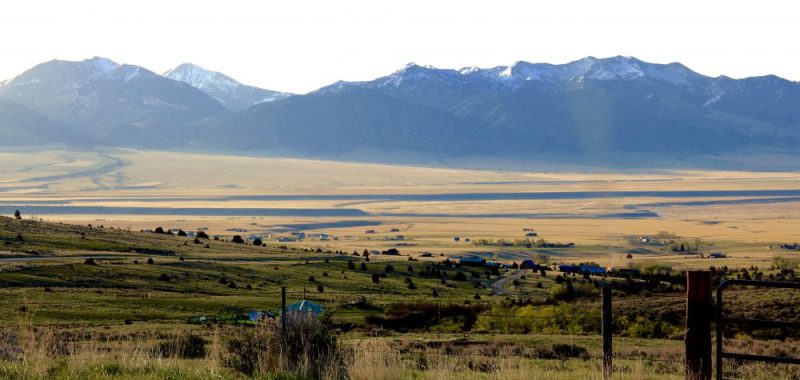
Hardin ranks as the most diverse place to live in Montana and holds the second position for places with the lowest cost of living in the state. This small town offers a close-knit community where locals welcome new residents with friendliness.
The town provides numerous outdoor activities including fishing and camping opportunities. Small businesses throughout Hardin offer residents places to explore and shop locally.
Hardin’s location provides scenic views of prairies with nearby mountains creating an attractive backdrop for daily life. The peaceful atmosphere makes it suitable for those seeking a quieter lifestyle.
The town’s affordability combined with its diverse population creates an accessible living option in Montana. Residents can enjoy the natural beauty of the area while maintaining lower living expenses compared to other Montana locations.
29. Wolf Point
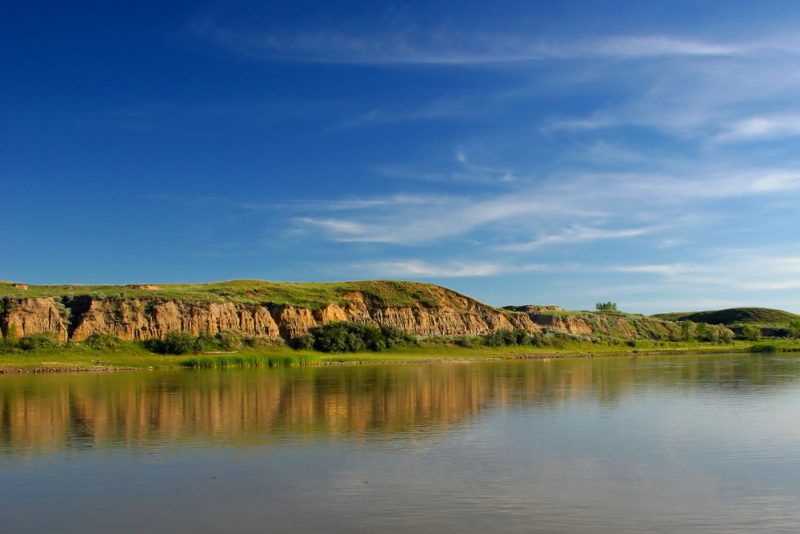
Wolf Point is a small city in Roosevelt County with a population of approximately 2,600 residents. The community offers a sparse suburban feel where most residents own their homes.
The town provides a strong sense of community and small-town charm. Residents have access to numerous bars and parks for recreation and social activities.
Housing costs in Wolf Point are significantly lower than Montana’s state average of $298,413. This affordability makes homeownership accessible for many families.
The area offers various outdoor activities including fishing and hiking opportunities. The town maintains several local restaurants and attractions to serve residents year-round.
Wolf Point residents tend to hold moderate political views. The poverty rate stands at 28.3%, which exceeds the national average, while the typical household earns $43,555 annually.
28. Scobey
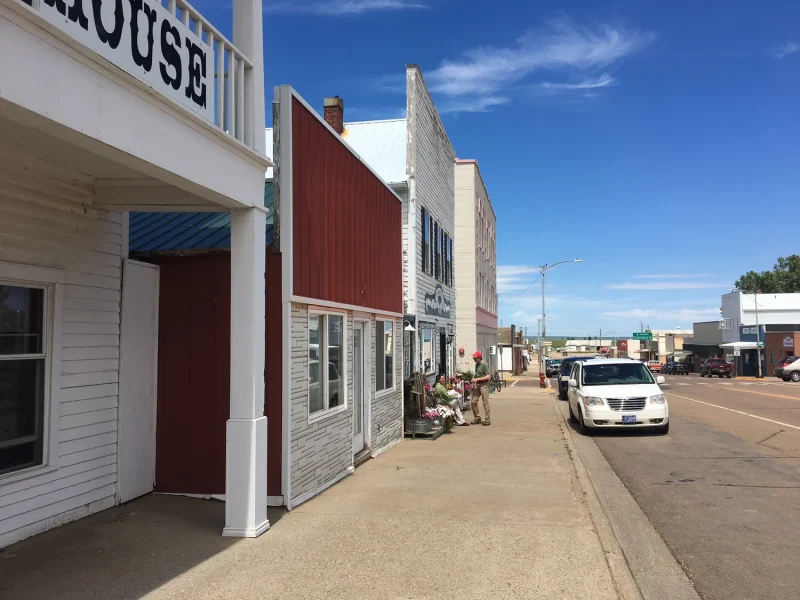
Scobey sits in northeastern Montana with a population of 674 people. This small town offers a high quality of life despite its modest size.
The housing market stands out as particularly attractive. Home prices remain significantly lower than Montana’s state average of $298,413, making homeownership accessible for many residents.
Scobey receives recognition for its overall livability. The town earns a score of 7 out of 10 in quality of life rankings, reflecting its strong community foundation.
The area provides essential amenities while maintaining its rural character. Residents benefit from the town’s close-knit community atmosphere and affordable cost of living.
Crime rates remain low in this northeastern Montana community. The combination of safety, affordability, and small-town charm attracts those seeking a quieter lifestyle away from urban centers.
27. Shelby
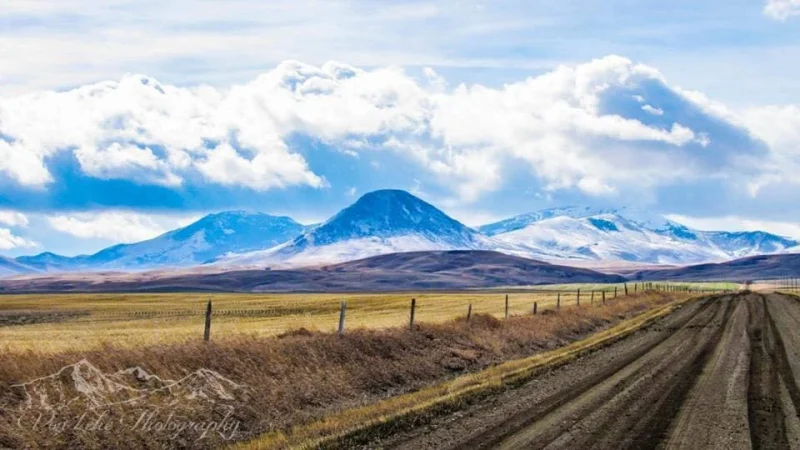
Shelby ranks among Montana’s top small cities with a population of approximately 3,078 residents. The city receives high marks for its rural charm and quality of life factors.
BestPlaces gives Shelby an overall ranking of 9.2 out of 10. The city scores particularly well in weather conditions at 9.4 and amenities at 8.5.
Housing costs remain reasonable with a rating of 8.1. The typical household earns $44,740 annually, below the national median but suitable for local living costs.
Shelby maintains a low crime rate, contributing to its reputation as a safe community. The poverty rate sits at 10.5%, which is 25% lower than the national average.
The area attracts residents with its diverse wildlife and natural scenery. Shelby offers a peaceful small-town atmosphere while providing essential amenities for comfortable living.
26. Choteau
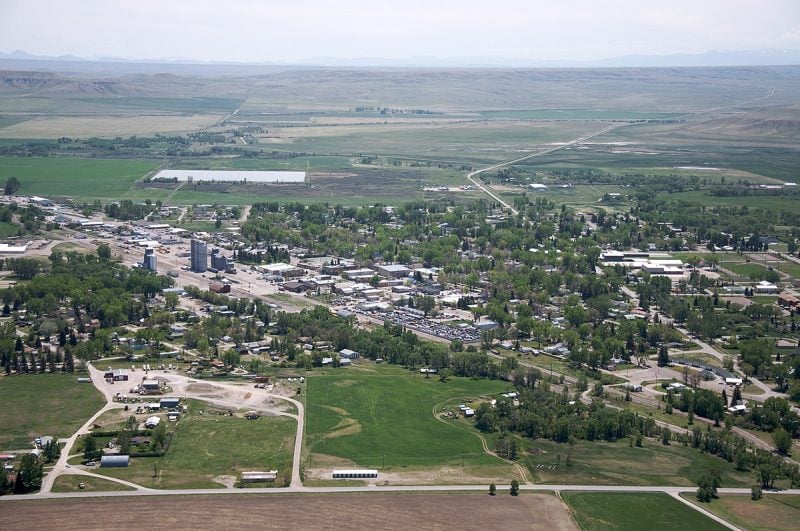
Choteau sits at the gateway to the Rocky Mountain Front in Teton County. This historic town developed from the fur trade and maintains its small-town character with a population of 1,829 residents.
The community offers year-round outdoor recreation opportunities. Residents enjoy stunning mountain views and easy access to hiking, fishing, and hunting areas.
Choteau provides a close-knit community atmosphere typical of rural Montana towns. The town features basic amenities and services for daily needs.
The median household income is $45,435, which falls below the national average. The poverty rate stands at 14.1%, slightly higher than the national rate.
Housing costs remain affordable compared to larger Montana cities. The town appeals to those seeking a quiet lifestyle with mountain access and outdoor activities.
25. Deer Lodge
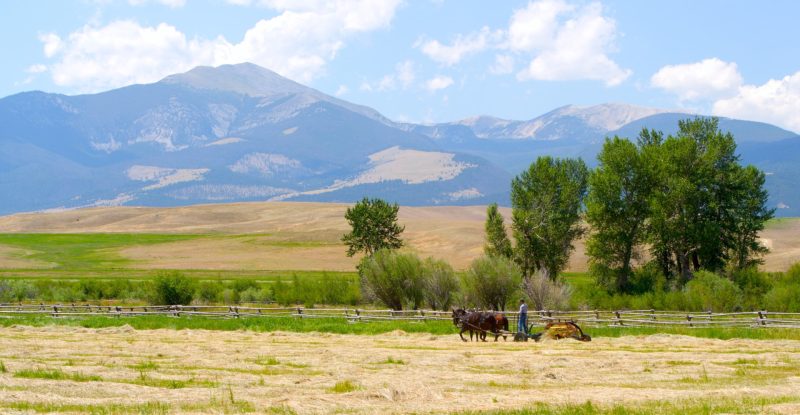
Deer Lodge stands as a small city in Powell County with approximately 3,300 residents. The community offers a suburban rural atmosphere where most residents own their homes.
The city earns recognition for its affordability and livability. Home prices remain significantly lower than Montana’s state average of $298,413. This makes Deer Lodge an attractive option for budget-conscious residents.
Crime rates stay relatively low throughout the area. The community maintains a comfortable climate year-round. Several recreational opportunities exist nearby for outdoor enthusiasts.
Many retirees choose Deer Lodge as their home base. The town features numerous bars and social gathering spots. Residents tend to lean conservative politically.
Deer Lodge receives high rankings for amenities and cost of living factors. The city scored 7 out of 10 on livability metrics from rating services.
24. Gardiner
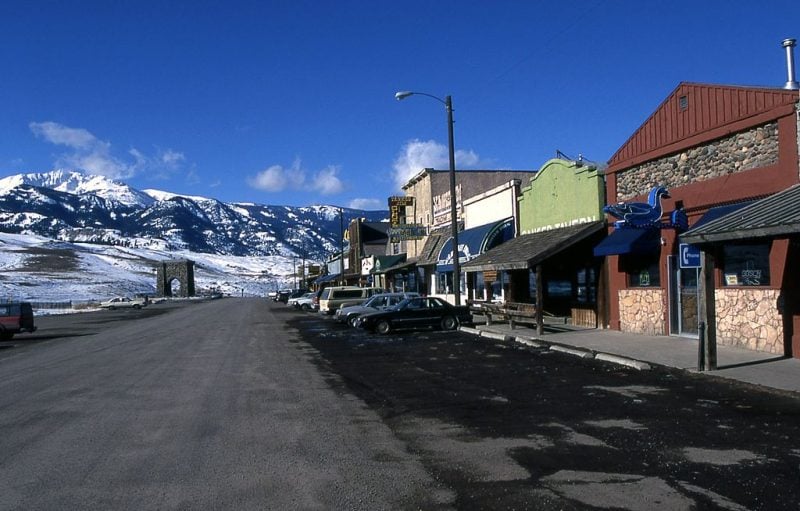
Gardiner sits at the north entrance to Yellowstone National Park in Park County. The small mountain town has a population of approximately 800 residents.
The community offers a suburban rural mix with stunning Rocky Mountain views. Most residents rent their homes rather than own them.
Home prices in Gardiner average around $366,300, which is higher than Montana’s state average. The town experiences all four seasons throughout the year.
Residents have access to numerous outdoor activities including camping, fishing, hunting, and hiking. The proximity to Yellowstone National Park provides additional recreational opportunities.
The town features several bars and restaurants for dining and entertainment. Public schools in the area rate above average compared to state standards.
Gardiner’s tight-knit community creates a friendly atmosphere among neighbors. The location appeals to those seeking small-town living with access to national park amenities.
23. Cut Bank
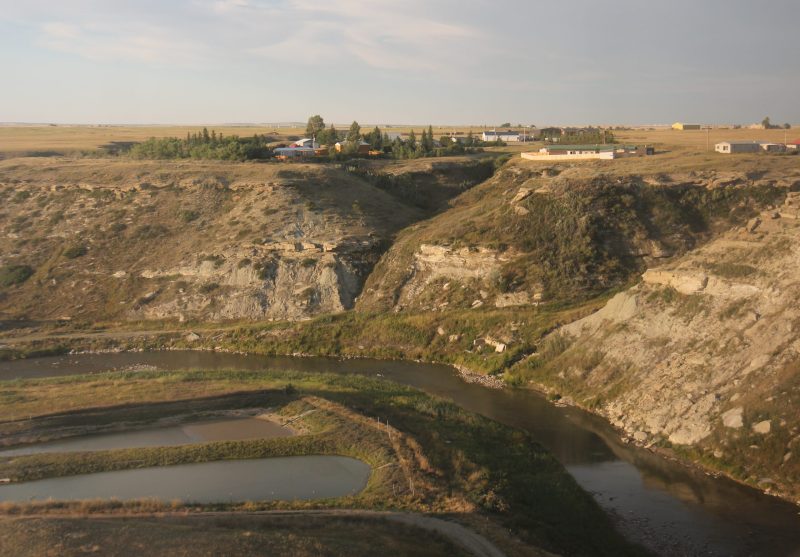
Cut Bank sits in northern Montana with a population of 3,232. The city consistently ranks among Montana’s best places to live.
Housing costs remain significantly below the state average of $298,413. This makes Cut Bank an affordable option for homebuyers and renters.
The community scores well in multiple livability categories. Education, amenities, and cost of living receive high ratings from residents.
Cut Bank offers small-town living with essential services nearby. The city provides a quiet atmosphere while maintaining access to necessary amenities.
Local neighborhoods feature varying home values and characteristics. The housing market reflects the community’s affordable nature compared to larger Montana cities.
The area attracts people seeking lower living costs without sacrificing quality of life. Cut Bank’s northern Montana location provides access to outdoor recreation and natural landscapes.
22. Roundup
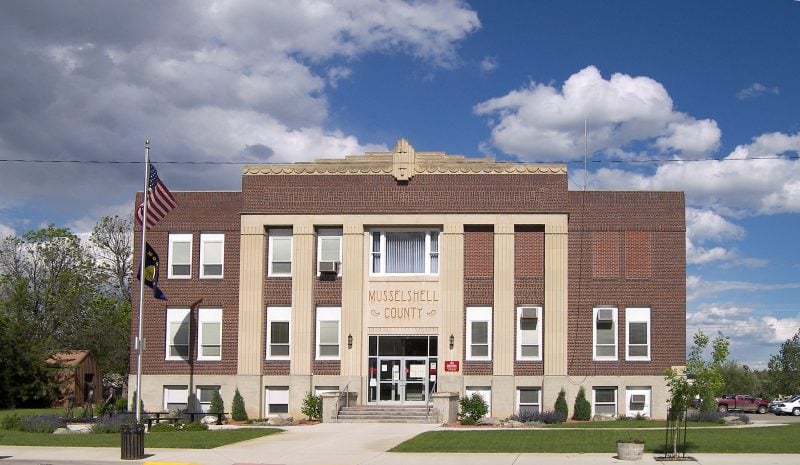
Roundup sits in the heart of Montana’s Big Sky Country with a population of approximately 2,000 residents. This small town offers a distinctly rural atmosphere surrounded by rolling hills and expansive open spaces.
The community maintains a tight-knit character that welcomes newcomers. Residents typically find it easy to integrate into the local social fabric.
The town provides essential amenities and services despite its modest size. Local businesses serve the daily needs of residents and surrounding agricultural areas.
Roundup’s location offers access to Montana’s outdoor recreation opportunities. The surrounding landscape provides hiking, hunting, and fishing activities within driving distance.
Housing costs remain affordable compared to larger Montana cities. The rural setting appeals to those seeking a quieter lifestyle away from urban centers.
The area’s economy connects closely to agriculture and ranching operations. Employment opportunities exist in farming, livestock, and related support services.
21. Hamilton
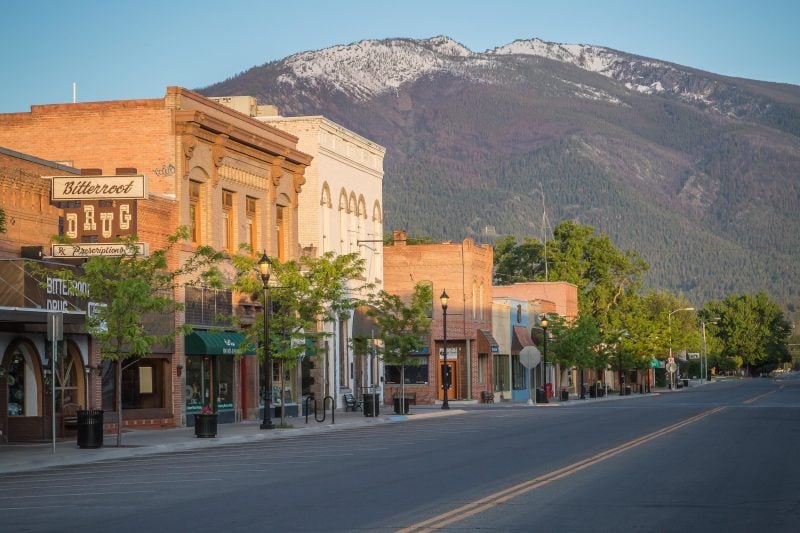
Hamilton serves as the largest community in the Bitterroot Valley with approximately 5,000 residents. The town functions as a central trade hub for the valley’s numerous farms, ranches, and orchards.
The city offers residents a dense suburban atmosphere where most people rent their homes. Hamilton attracts many retirees and maintains a conservative political lean.
Public schools in Hamilton perform above average compared to state standards. The town provides easy access to outdoor activities in the nearby Bitterroot Mountains.
Hamilton’s location makes it attractive for those seeking small-town living with mountain recreation opportunities. The community benefits from its role as a regional center for agricultural commerce.
The town combines rural Montana charm with practical amenities. Residents enjoy access to local nightlife venues and outdoor recreation within a compact community setting.
20. Lewistown

Lewistown sits in central Montana with a population of approximately 6,000 residents. The town offers a sparse suburban feel where most residents own their homes.
The community provides numerous outdoor recreation opportunities in the surrounding landscapes. Residents enjoy access to hiking, fishing, and other activities in the nearby mountains and plains.
Downtown Lewistown features various restaurants, bars, coffee shops, and local businesses. The town maintains several parks for families and recreational activities.
Housing costs in Lewistown remain relatively affordable compared to larger Montana cities. The area attracts families, young professionals, and retirees seeking a quieter lifestyle.
Lewistown receives a livability score that ranks it among Montana’s smaller communities. The town combines rural charm with essential amenities and services for daily living.
19. Libby

Libby offers residents an affordable lifestyle with living costs approximately 15% below the national average. The median home price sits around $185,000, making homeownership accessible for many families.
This small town in Lincoln County combines rural charm with practical amenities. The Kootenai River flows nearby, providing scenic beauty and outdoor recreation opportunities.
Libby scores well in several livability categories including cost of living, housing affordability, and crime rates. The community maintains small-town values while offering essential services and healthcare facilities.
The average household income reaches about $39,000, supporting a modest but comfortable standard of living. Housing costs remain significantly lower than Montana’s state average of $298,413.
Residents enjoy access to outdoor activities year-round, from fishing and hiking to winter sports. The town’s location provides easy access to forests and mountains while maintaining necessary infrastructure and services.
18. Polson

Polson sits on the shores of Flathead Lake in northwestern Montana. The town has a population of approximately 5,300 residents and serves as the county seat of Lake County.
The community offers stunning lake views and access to numerous outdoor activities. Residents enjoy boating, fishing, and swimming in the largest natural freshwater lake west of the Mississippi River.
Downtown Polson features local shops, restaurants, and galleries. The town maintains a small-town atmosphere while providing essential amenities and services.
Home prices in Polson exceed Montana’s state average. Most residents own their homes, contributing to neighborhood stability.
The local school system performs above average compared to other Montana districts. Young professionals and families find the area appealing for its recreational opportunities and community feel.
Polson’s economy benefits from tourism, agriculture, and small businesses. The median household income is lower than the national average at around $39,600 annually.
17. Glendive
Glendive sits in eastern Montana along the Yellowstone River with a population of 4,831 residents. The town offers a sparse suburban atmosphere where most residents own their homes.
Housing costs remain significantly below national averages, making homeownership accessible for families and retirees. The close-knit community creates strong neighborhood connections.
Residents enjoy numerous parks and recreational areas throughout the city. The town maintains several bars and social gathering places for entertainment.
The local job market focuses primarily on agriculture and energy sectors. Employment opportunities can be limited compared to larger Montana cities.
Glendive attracts families seeking affordable living costs and a small-town environment. The community tends to lean conservative in its political outlook.
Crime rates stay relatively low compared to urban areas. The town provides a safe environment for raising children and retirement living.
16. Stevensville
Stevensville sits in Ravalli County with a population of 2,172 residents. The town offers a sparse suburban feel where most residents own their homes.
Families and retirees make up the majority of the community. The area attracts those seeking a quieter lifestyle with conservative values.
The mountainous backdrop provides stunning natural beauty year-round. Residents enjoy close proximity to both Missoula and Bitterroot National Forests.
Outdoor recreation opportunities abound throughout the region. Hiking, camping, fishing, and hunting are popular activities among locals.
The town maintains a strong community spirit with friendly residents. Local restaurants, cafes, and shops serve the small but tight-knit population.
Housing quality varies significantly across different neighborhoods in Stevensville. Property values reflect these disparities throughout the town.
The location offers access to Montana’s outdoor lifestyle while maintaining small-town charm.
15. Bigfork
Bigfork sits on the shores of Flathead Lake in northwestern Montana. This small city in Flathead County has a population of 4,270 residents.
The community ranks highly among Montana’s best places to live. Rankings consider factors like cost of living, housing options, education quality, and crime rates.
Bigfork offers access to outdoor recreation through its lakefront location. The city provides proximity to Glacier National Park and other scenic destinations in the region.
Employment opportunities and local amenities contribute to the area’s appeal. The town maintains a balance between small-town character and essential services.
Housing quality varies throughout different neighborhoods in Bigfork. Property values reflect the desirability of lakefront and mountain proximity locations.
The city attracts residents seeking Montana’s outdoor lifestyle while maintaining access to community resources. Bigfork combines natural beauty with practical living considerations.
14. Columbia Falls
Columbia Falls sits in northwestern Montana with a population of approximately 5,500 residents. The town offers a sparse suburban atmosphere where most residents own their homes.
Outdoor enthusiasts find abundant recreational opportunities nearby. Glacier National Park provides hiking trails and scenic landscapes. Whitefish Mountain Resort offers skiing during winter months.
The downtown area features various shops, restaurants, and coffee establishments. Families and young professionals make up a significant portion of the community.
Housing costs align with Montana’s state average of around $298,000. The cost of living remains relatively affordable compared to larger metropolitan areas.
Columbia Falls maintains proximity to natural attractions while providing essential amenities. The town attracts residents seeking small-town living with access to outdoor recreation and mountain scenery.
13. Miles City
Miles City offers an appealing blend of small-town charm and Western heritage. The city provides residents with various outdoor recreation opportunities and maintains a strong sense of community.
Housing costs remain well below national averages. The median housing cost sits at $222,000, significantly lower than the U.S. average of $357,000.
Rental options include apartments, duplexes, and single-family homes. These properties cost considerably less than comparable rentals in larger Montana cities like Missoula or Bozeman.
The overall cost of living equals approximately the national average. This makes Miles City more affordable than many other Montana locations.
Residents enjoy year-round entertainment through rodeos, music festivals, and BBQ cookoffs. The city maintains active community engagement through various seasonal events and fairs.
Miles City combines affordability with quality amenities and recreational activities.
12. Butte
Butte offers affordable living compared to Montana’s average home price of $298,413. The city maintains significantly lower housing costs than most areas across the state.
Travel and Leisure recognized Butte as one of Montana’s best places to live. The recognition stems from its rich mining history and scenic mountain surroundings.
The community provides a small-town atmosphere with friendly residents. People quickly welcome newcomers and maintain strong neighborhood connections throughout the city.
Butte’s location provides access to outdoor recreation opportunities year-round. Residents enjoy hiking, fishing, and winter sports in the nearby mountains and wilderness areas.
The city combines historical charm with modern amenities. Downtown Butte features preserved architecture from its copper mining era alongside contemporary businesses and restaurants.
11. Havre
Havre sits as the largest community along Montana’s Hi-Line in Hill County. The city serves as the county seat with a population of approximately 9,800 residents.
Known as “The Paris of the Prairie,” Havre features a unique historic downtown area along the Milk River. The community has earned recognition as one of Montana’s notable places to live.
The median household income is $50,635, which falls below the national average. The poverty rate stands at 15.2%, higher than the national rate.
Havre offers scenic beauty and friendly residents in a small-town setting. The area provides good options for families, with various neighborhoods offering different characteristics and home values.
The city’s location in northern Montana provides access to the state’s vast prairie landscapes. Housing costs and neighborhood quality vary throughout different areas of the community.
10. Anaconda
Anaconda sits in southwestern Montana, surrounded by the Anaconda-Pintler mountain range. This former copper smelting town offers affordable housing and rich history.
The city provides easy access to outdoor recreation areas throughout Big Sky Country. Residents enjoy proximity to hiking, fishing, and mountain activities year-round.
Housing costs remain lower than many Montana cities. The town features various neighborhoods with different home values and styles.
Anaconda’s location offers convenience to larger cities. It sits within driving distance of Bozeman, Missoula, Helena, and Butte.
The community maintains a small-town atmosphere while providing essential amenities. Local schools serve families, and the downtown area supports local businesses.
Mountain views define the landscape around Anaconda. The setting appeals to those seeking scenic beauty and outdoor lifestyle opportunities in Montana.
9. Livingston
Livingston sits just 30 minutes east of Bozeman in Montana’s scenic Yellowstone River Valley. This charming town of approximately 7,700 residents serves as a gateway to Yellowstone National Park.
The community features a vibrant arts scene and well-preserved historic downtown district. Livingston ranks as the fourth-best place for young professionals in Montana and twelfth overall for best places to live statewide.
Living costs run about 2% higher than the national average and 8% above Montana’s state average. The typical household earns $44,591 annually, which falls below the national median.
Residents enjoy proximity to both the Rocky Mountains and abundant outdoor recreation opportunities. The town maintains its small-town character while offering cultural amenities and natural beauty in its backyard.
Livingston combines historic charm with modern amenities, making it attractive for those seeking a quieter lifestyle near major outdoor attractions.
8. Whitefish
Whitefish stands out as one of Montana’s most desirable mountain towns. The city offers stunning views and proximity to Glacier National Park.
World-class skiing at Whitefish Mountain Resort attracts winter sports enthusiasts year-round. Summer activities include hiking, biking, and water sports on nearby lakes.
The downtown area features local shops, restaurants, and a welcoming community atmosphere. Residents enjoy both small-town charm and modern amenities.
Housing prices have increased significantly due to high demand from newcomers. Real estate costs exceed Montana’s state average, reflecting the area’s popularity.
The strong tourism industry provides economic stability and job opportunities. Many residents work in hospitality, recreation, or service sectors.
Whitefish combines outdoor recreation with community amenities, making it attractive for families and retirees alike.
7. Belgrade
Belgrade sits just 20 minutes from Bozeman in Gallatin County. The town offers a population of approximately 11,425 residents who enjoy a sparse suburban atmosphere.
Most residents own their homes rather than rent. The typical household earns around $62,335 annually, which falls slightly below the national median.
Belgrade attracts families and young professionals seeking Montana’s outdoor lifestyle. The area provides access to hiking, biking, skiing, and fishing opportunities throughout the region.
The town maintains numerous parks for recreational activities. Public schools in Belgrade perform above average compared to state standards.
Housing costs remain more affordable than nearby Bozeman while still providing similar lifestyle benefits. The poverty rate stands at 11.1%, which is lower than the national average.
Belgrade offers residents the Montana way of life with outdoor recreation access under expansive skies.
6. Kalispell
Kalispell serves as the commercial hub of northwest Montana’s Flathead Valley. The city sits centrally positioned with direct access to Glacier National Park and views of multiple mountain ranges.
Outdoor recreation defines much of the local lifestyle. Residents enjoy skiing, fishing, and hunting throughout the year. The proximity to Flathead Lake provides additional water-based activities.
Housing affordability rates at 73 percent according to recent rankings. The cost of living runs approximately 5 percent below national averages. Neighborhood quality varies significantly across different areas of the city.
CNN Money recognized Kalispell as one of 25 best retirement destinations in 2012. The community maintains a strong local identity while offering essential services and amenities.
The city attracts both families and retirees seeking mountain living without extreme isolation. Employment opportunities exist primarily in healthcare, retail, and tourism sectors.
5. Helena
Helena serves as Montana’s capital city and offers residents a unique blend of history and modern amenities. The city sits in west-central Montana, surrounded by mountains in a large, level valley.
With over 60,000 residents, Helena maintains a manageable size while providing essential services and cultural attractions. The community features a strong mix of retirees, particularly veterans, and younger families.
The city’s location provides access to abundant outdoor recreation opportunities year-round. Helena’s climate remains moderate compared to other Montana locations.
Residents benefit from the city’s role as the state capital, which brings stable employment opportunities and government services. The area offers good healthcare facilities and educational options.
Helena’s historic downtown district preserves much of its gold rush heritage from the 1860s. The city provides cultural amenities including museums, theaters, and community events that enhance quality of life.
4. Great Falls
Great Falls ranks as Montana’s third largest city with a population of 60,412 residents. The city earned second place out of six Montana cities on BestPlaces Rankings with an overall score of 62 out of 100 points.
Residents enjoy excellent amenities, reasonable cost of living, and quality education systems. The public schools perform above average compared to state standards.
Great Falls offers a dense suburban atmosphere where most residents own their homes. The city attracts families and young professionals who appreciate the conservative-leaning community culture.
Natural beauty defines the area’s appeal, with abundant outdoor recreation opportunities throughout Big Sky Country. The city features numerous parks and bars that serve the local community.
The location provides easy access to scenic destinations including Flathead Lake and Glacier National Park. Great Falls combines growing industry and job opportunities with rich arts and culture offerings.
3. Bozeman
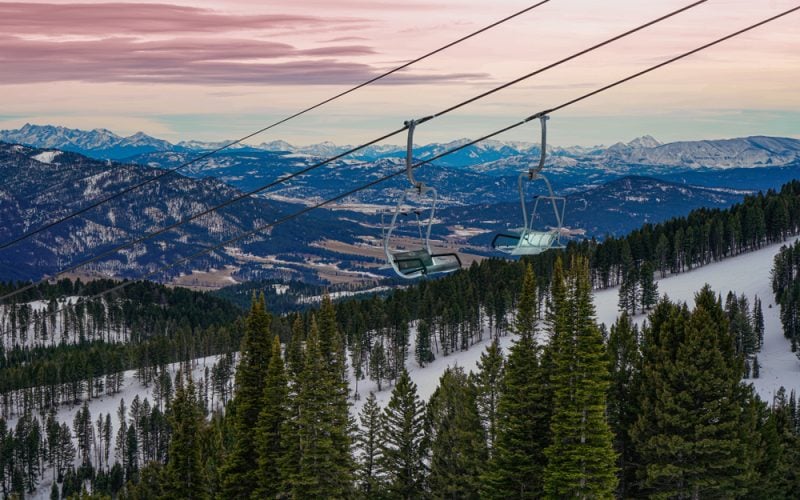
Bozeman consistently ranks as Montana’s top place to live. The city offers 360-degree mountain views and serves as the fastest-growing micropolitan area in the country.
The population of 50,970 has grown 18.4% since 2020. The median age is 28, reflecting the city’s youthful energy and university presence.
Downtown Bozeman features historic architecture with shops and restaurants within walking distance. The area provides easy access to outdoor recreation and cultural amenities.
Several desirable neighborhoods include Bridger Creek with mountain views, Cattail Creek for families, and Southbridge for quieter living. Each area offers distinct character as the city continues expanding.
The median home price is $587,600, reflecting strong demand. The unemployment rate sits at 3.0% with diverse employment opportunities.
Bozeman’s location provides access to world-class skiing, hiking, and fishing. The city balances urban amenities with Montana’s outdoor lifestyle.
2. Missoula

Missoula stands out as Montana’s premier college town, home to the University of Montana. The city sits in a valley surrounded by mountains and rivers, creating stunning natural scenery.
Outdoor enthusiasts find endless recreation opportunities throughout the year. Hiking, fishing, skiing, and biking trails are easily accessible from downtown areas.
The presence of the university brings cultural diversity and educational resources. Students and faculty contribute to a vibrant arts scene and numerous community events.
Housing costs remain relatively affordable compared to other mountain towns. The job market benefits from both university employment and a growing outdoor recreation economy.
Missoula’s compact downtown area offers walkability and local businesses. Craft breweries and restaurants reflect the community’s focus on local products and sustainability.
The city maintains strong environmental stewardship values. Residents actively participate in conservation efforts and outdoor preservation initiatives throughout the region.
1. Billings
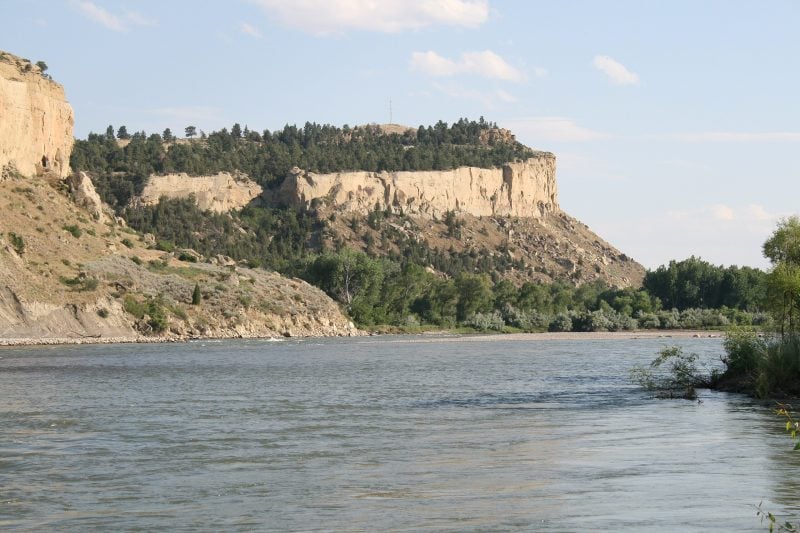
Billings stands as Montana’s largest city and serves as a major cultural and business hub. The city functions as a transportation gateway between the eastern plains and western mountain regions.
Located in south-central Montana, Billings offers a balanced mix of urban amenities and outdoor recreation opportunities. The city maintains a growing economy with diverse job opportunities across multiple industries.
Housing costs in Billings remain more affordable compared to many western cities. The area features varied neighborhoods with different price points and characteristics.
Billings provides access to quality public schools and higher education institutions. The city’s crime rates are generally reasonable for an urban area of its size.
Residents enjoy proximity to natural attractions including the Yellowstone River and nearby mountain ranges. The city offers cultural venues, dining options, and recreational facilities that serve the broader regional population.
Key Factors That Make Montana Locations Highly Livable
Montana’s most desirable communities share several defining characteristics that consistently rank them among the nation’s top places to live. These locations excel in outdoor access, maintain reasonable living costs, and foster strong community bonds.
Quality of Life and Outdoor Recreation
Montana’s top-rated cities like Bozeman, Missoula, and Helena provide immediate access to world-class outdoor recreation. Residents enjoy skiing, hiking, fishing, and hunting within minutes of their homes.
The state’s vast wilderness areas and national parks create unparalleled recreational opportunities. Glacier National Park, Yellowstone, and numerous state parks offer year-round activities that enhance daily life.
Key recreational amenities include:
-
World-renowned ski resorts and backcountry skiing
-
Blue-ribbon trout streams and pristine lakes
-
Extensive hiking and mountain biking trail systems
-
Wildlife viewing and hunting opportunities
Montana cities consistently earn recognition as top ski towns and outdoor recreation destinations. The combination of mountain access and urban amenities creates a unique lifestyle balance.
Healthcare services in major Montana cities provide quality medical care. Educational opportunities range from excellent public schools to respected universities like Montana State University in Bozeman.
The state’s clean air and low population density contribute to better physical and mental health outcomes for residents.
Cost of Living Considerations
Montana offers more affordable housing compared to other mountain states like Colorado or Utah. Many communities still provide reasonable home prices relative to income levels.
Property taxes remain relatively low across most Montana counties. The absence of a state sales tax reduces the overall tax burden for residents.
Housing affordability factors:
-
Median home prices below national mountain region averages
-
Lower property tax rates than neighboring states
-
No state sales tax on purchases
-
Reasonable utility costs in most areas
Job opportunities in technology, healthcare, and outdoor recreation industries support local economies. Tourism and agriculture provide additional employment stability.
Energy costs benefit from the state’s natural resource abundance. Montana’s coal, natural gas, and renewable energy sources help keep utility bills manageable.
Some areas experience seasonal employment fluctuations tied to tourism cycles. Winter resort communities may see higher living costs during peak seasons.
Community Culture and Safety
Montana communities maintain low crime rates compared to national averages. Small-town values and strong social connections contribute to safer neighborhoods.
The state’s culture emphasizes independence, outdoor ethics, and community support. Residents often participate in local government and volunteer activities at high rates.
Safety and community indicators:
-
Below-average violent and property crime rates
-
Active neighborhood watch programs
-
Strong emergency services coverage
-
High civic participation rates
Local festivals, farmers markets, and outdoor events create regular community gathering opportunities. These activities strengthen social bonds and local identity.
Montana’s educational systems receive strong community support through local involvement and funding. Many districts maintain smaller class sizes and personalized attention.
The “Montana way” emphasizes helping neighbors and preserving natural resources for future generations. This cultural foundation creates stable, supportive communities that attract long-term residents.
How to Choose the Right Montana Community for Your Lifestyle
Montana residents must weigh urban conveniences against rural solitude when selecting their ideal community. Access to essential services like schools, healthcare facilities, and employment centers varies significantly across the state’s diverse regions.
Urban vs. Rural Living
Urban Montana communities like Billings, Bozeman, and Missoula offer concentrated amenities and services. These cities provide diverse employment opportunities, cultural venues, and reliable public transportation systems.
Residents enjoy walkable downtown areas with restaurants, shops, and entertainment options. Medical specialists and hospitals are readily accessible within city limits.
Rural Montana towns deliver expansive properties, lower population density, and direct access to wilderness areas. Small communities often feature tight-knit social networks where neighbors know each other personally.
Rural residents typically need vehicles for daily errands since services are spread across greater distances. Property taxes are often lower, but utility costs may increase due to infrastructure limitations.
Semi-rural suburbs like Belgrade provide middle-ground solutions. These communities combine affordable housing with reasonable commute times to larger employment centers.
Proximity to Schools, Work, and Healthcare
School districts vary dramatically in Montana’s different regions. Bozeman and Missoula maintain well-funded public schools with advanced placement programs and extracurricular activities.
Rural districts may offer smaller class sizes but fewer specialized programs. Private school options concentrate primarily in urban areas.
Employment centers cluster around major cities and resource extraction sites. Remote work capabilities expand location flexibility for technology and professional service workers.
Healthcare access becomes critical for families with medical needs. Billings houses the state’s largest medical facilities and specialist networks. Rural communities often rely on critical access hospitals with limited services.
Emergency response times increase significantly in remote areas. Residents should consider driving distances to urgent care facilities and trauma centers when selecting communities.





